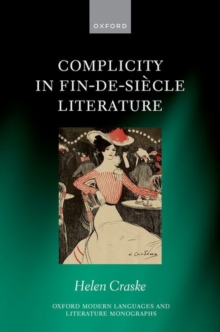
Shipwreck in French Renaissance Writing EPUB
by Jennifer H. Oliver
Part of the Oxford Modern Languages and Literature Monographs series
EPUB
Description
In the sixteenth century, a period of proliferating transatlantic travel and exploration, and, latterly, religious civil wars in France, the ship is freighted with political and religious, as well as poetic, significance; symbolism that reaches its height when ships-both real and symbolic-are threatened with disaster.
The Direful Spectacle argues that, in the French Renaissance, shipwreck functions not only as an emblem or motif within writing, but as apart, or the whole, of a narrative, in which the dynamics of spectatorship and of co-operation are of constant concern.
The possibility of ethical distance from shipwreck—imagined through the Lucretian suave mari magno commonplace—is constantly undermined, not least through a sustained focus on the corporeal. This book examines the ways in which the ship and the body are made analogous in Renaissance shipwreck writing; bodies are described and allegorized in nautical terms, and, conversely, ships themselves become animalized and humanized.
Secondly, many texts anticipate that the description of shipwreck will have an affect not only on its victims, but on those too of spectators, listeners, and readers.
This insistence on the physicality of shipwreck is also reflected in the dynamic of bricolagethat informs the production of shipwreck texts in the Renaissance.
The dramatic potential of both the disaster and the process of rebuilding is exploited throughout the century, culminating in a shipwreck tragedy.
By the late Renaissance, shipwreck is not only the end, but often forms the beginning of astory.
Information
-
Download - Immediately Available
- Format:EPUB
- Pages:224 pages
- Publisher:OUP Oxford
- Publication Date:29/08/2019
- Category:
- ISBN:9780192567550
Other Formats
- PDF from £77.59
Information
-
Download - Immediately Available
- Format:EPUB
- Pages:224 pages
- Publisher:OUP Oxford
- Publication Date:29/08/2019
- Category:
- ISBN:9780192567550










